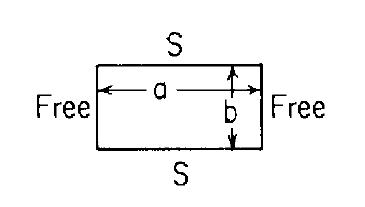IdanPV
Mechanical
- Aug 26, 2019
- 496
Hello everyone,
I am seeking assistance in finding formulas to calculate the stress and deflection of a flat, rectangular plate. The plate is simply supported along its long edges and free on the short edges, as illustrated in the attached figure.

I have explored resources such as Roark's and Timoshenko, but unfortunately, I have not been able to locate relevant information.
I appreciate any help you can provide.
I am seeking assistance in finding formulas to calculate the stress and deflection of a flat, rectangular plate. The plate is simply supported along its long edges and free on the short edges, as illustrated in the attached figure.

I have explored resources such as Roark's and Timoshenko, but unfortunately, I have not been able to locate relevant information.
I appreciate any help you can provide.

